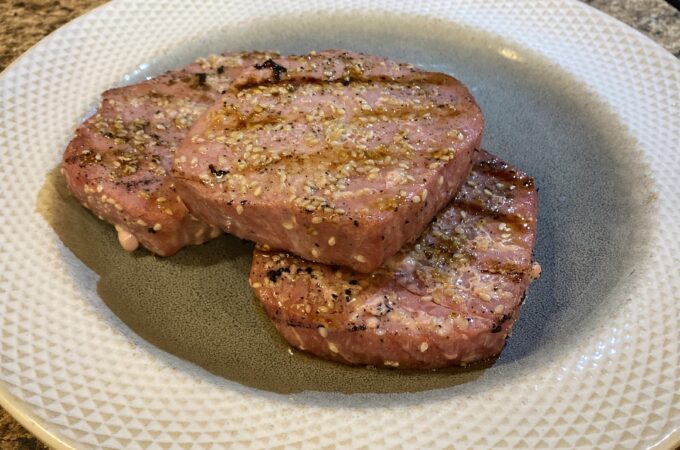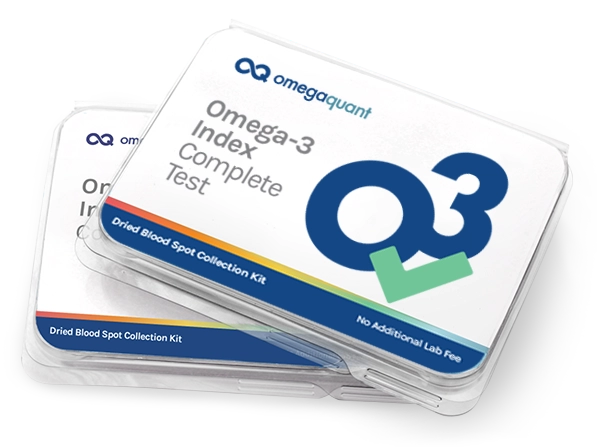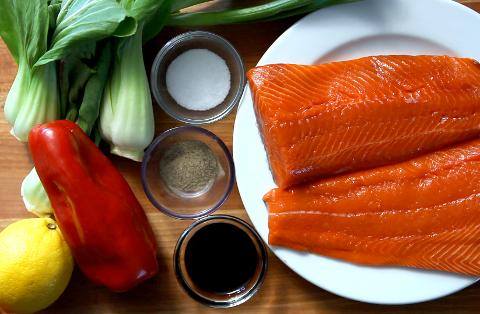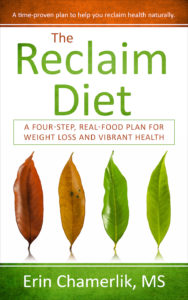
DHA for Brain and Eye Health
Do you care about your brain and eyes? How much seafood do you eat each week?

WHY eat seafood?
The big reason is that we get Docosahexaenoic acid (DHA)!
DHA is quantitatively the most abundant omega-3 fatty acid in the brain and retina. [source]
DHA Effects
- boosts mitochondria, the energy-producing organelles within a cell
- protects your heart
- strengthens your brain and helps maintain proper brain function
There are three types of Omega-3 fatty acids
DHA, EPA (eicosapentaenoic acid), and ALA (alpha-linolenic acid) are the three types of O-3 fatty acids. DHA and EPA come from animal/fish sources. ALA is found in plants like flax and chia.
The ALA in plants does not convert efficiently to DHA. ALA can be converted into EPA and then to DHA, but the conversion is very limited, with reported rates of less than 15%. [source]
Preformed DHA (seafood) needs to be consumed.
DHA is found in seafood, grass-fed meat and pastured butter.
- The brain and eye have high DHA contents compared to other organs.
- DHA is especially concentrated in the grey matter of the brain and in the rod outer segments of the retina.
- In the brain DHA is involved in neuronal signaling, while in the eye it is involved in the quality of vision.
- A lower DHA content is linked to poorer cognitive development and visual function.
- The higher the Omega 3’s the lower the risk of premature death
Sources of DHA in Food
- Highest amounts of DHA are found in fatty fish (salmon, mackerel, anchovies, sardines, herring and tuna. SMASH-T).
- Human breast milk has DHA, especially when the mama eats seafood.
- The modern Western diet, high in Omega-6 fatty acids causes the beneficial DHA to be displaced in the cell membranes. This corresponds to a rise in modern lifestyle diseases including disorders of the brain, heart and eye.
Amount of DHA in Seafood, 3oz serving [source][source]
- Salmon (1220mg DHA)
- Mackerel (590mg DHA)
- Anchovies (770mg – 1000mg DHA)
- Sardines (740mg DHA)
- Herring (940mg DHA)
- Tuna, canned (170mg DHA)
Eat Seafood and Supplement
Those who do not wish to supplement will want to eat wild caught seafood daily (salmon, mackerel, anchovies, sardines, herring and tuna. SMASH-T 🙂
Supplements I recommend
Choose either 2 soft gels of Nordic Naturals ProOmega 2000 or 2 tsp of Carlson Cod Liver Oil, daily.
Nordic Naturals ProOmega 2000, 2 soft gels:
- DHA … 1,125mg Docosahexaenoic Acid
- EPA … 875mg Eicosapentaenoic Acid
Carlson Cod Liver Oil, 2 tsp:
- Vitamin A … 510mcg RAE from cod liver oil and retinyl palmitate
- Vitamin D … 800IU
- Vitamin E … 134mg as d-alpha tocopherol and mixed tocopherols.
- DHA … 1,000mg Docosahexaenoic Acid
- EPA … 800mg Eicosapentaenoic Acid
People with an optimal level of omega-3s in their blood tend to live longer, healthier lives – TEST at Home!

10% off Coupon Code
See all the testing options here, and use coupon code JWIJBI1QF7 at checkout for another 10% off.
OmegaQuant is an independent, CLIA-certified lab that offers Omega-3 Index, Prenatal DHA and Mother’s Milk DHA testing to researchers, clinicians and the public.
When you take an Omega-3 Index test it gives you a percentage, which is simply a measure of the amount of EPA and DHA in your blood. An Omega-3 Index of 8% or higher is ideal, the lowest risk zone. However, most people hover around 6% or below. And unfortunately in the US, most people are at 4% or below – the highest risk zone.
Raising your Omega-3 Index to the desirable zone of 8% will help ensure you are getting enough of the right omega-3s — EPA and DHA — to protect your health.
References
- https://www.nature.com/articles/s41467-021-22370-2
- https://pubmed.ncbi.nlm.nih.gov/27842299/
- https://pubmed.ncbi.nlm.nih.gov/25954194/
- https://www.karger.com/Article/FullText/448262
- https://www.ncbi.nlm.nih.gov/pmc/articles/PMC3257695/
Recommended
-
Dandelion for Liver Support and Health BenefitsJuly 20th, 2024
-
Modified Citrus PectinJuly 11th, 2024
-
Bentonite Clay Mask for Face and ArmpitsJuly 8th, 2024
-
Two Supplements for Erectile DysfunctionJune 30th, 2024









